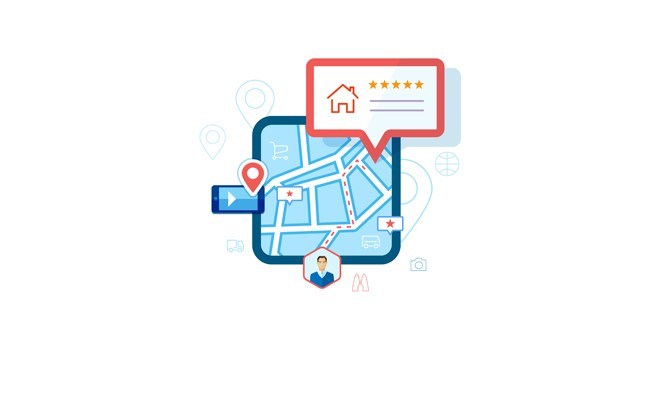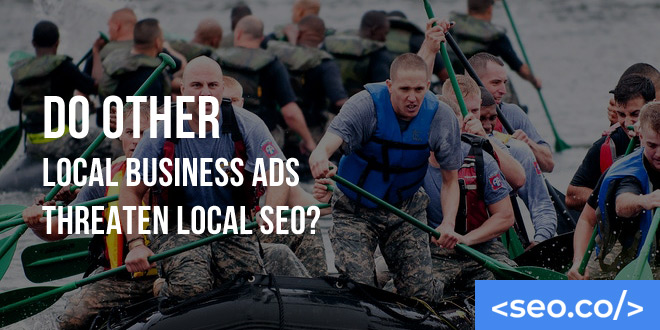Google advertisements have been around on the search engine since, well, Google itself, and businesses have been taking advantage of them in every iteration they’ve seen. From the off-hand ads that nobody clicked, to the yellow-denoted paid search results at the top of your list, to the carousel-like shopping results for products related to your search, Google is always tinkering with the way it processes and displays advertisements.
For many marketers, these ads are a blessing—they’re a quick, relatively cheap way to increase online visibility on the most popular search engine on the planet. But there’s also a flip side for businesses looking to generate more attention organically. Dealing with prominently displayed ads means receiving less search traffic—even if you’re ranking first, organically. This can impact your local rankings.
There are only two ways around this dilemma. One is to pay for your own set of ads on the search engine, but because so many businesses are competing for that ad space, costs have dramatically risen over the course of the past few years. The other solution is to go after more targeted, niche phrases that don’t carry advertisements, but those generate far less total web traffic. Both solutions only mitigate the problems that paid search ads present for organic search marketers.
Now, Google is unleashing an entirely new type of advertising, to roll out immediately, that could disrupt the local SEO world and reshape strategies for improving local SEO metrics. If you’re involved in search engine optimization — specifically local search marketing — you need to know the specifics and start preparing for the inevitable changes to come.
Table of Contents
The Extent of the New Local Ads and Local SEO Tactics
 The local ads produced and managed by Google are a bit different than their older counterparts. Perhaps most notably, they’re only available on mobile devices. When a mobile user searches for certain keywords or phrases or performs location-based searches, he/she may now be subjected to these new “local” advertisements. However, on a desktop or laptop, only organic search results may appear.
The local ads produced and managed by Google are a bit different than their older counterparts. Perhaps most notably, they’re only available on mobile devices. When a mobile user searches for certain keywords or phrases or performs location-based searches, he/she may now be subjected to these new “local” advertisements. However, on a desktop or laptop, only organic search results may appear.
We know that “near me” searches for physical locations have more than doubled in the past year, further emphasizing the growing importance of local SEO for mobile users. With most of those queries being performed on a mobile device, it makes sense that Google would try to appeal to that growing demographic of local searchers.
Google, as a search engine, is calling these mobile-specific ads the “nearby businesses” pack, which generates local search results based in part on proximity. This shift highlights the importance of aligning your paid advertising strategy with your local SEO efforts to maximize visibility. For certain queries, up to four separate local search results may appear—sometimes less, but never more. The paid ads themselves are quite similar to organic listings, featuring the name of the business in a functionally similar layout. However, as you might expect, paid ads are listed more prominently, and they feature not only the name of the business and a link to their site, but also hot buttons that encourage customers to call the business or get directions.
The advertisements function within Google AdWords like any other paid Google ad. However, they are primarily driven by the optional location extensions that businesses can enable. Because it is a new feature, not much is known about the tricks and settings you can play with for the best possible results. Google will likely experiment with the ads further before becoming satisfied with the layout.
How Nearby Business Ads Will Affect Local SEO

Local SEO was once a relatively safe haven for businesses intimidated or frustrated by the level of competition in a national search. Optimizing your business for a local audience was faster, easier, cheaper, and ultimately more successful, especially if you only had a limited budget to work with. It was a space where any local business could conceivably rank at the top for at least one keyword phrase.
Now, paid local ads are reshaping the competitive edge traditionally held by strong local SEO strategies. To maintain that edge, businesses must continuously refine their local SEO efforts to adapt to this new advertising model. Even in local-specific queries, users will first face a list of paid advertisers , meaning a top organic rank today won’t generate as much traffic as a top organic rank did a few weeks ago. However, that doesn’t mean that a local SEO strategy will no longer be effective.
There are a couple of complicating factors that make local SEO still viable within search engine optimization, even in this new context. First, consider the fact that paid ads do generate substantial local traffic, but many users still see paid ads as white noise, skipping down to the organic search results because they know the businesses listing themselves have an ulterior motive to generate revenue. This means that, while paid ads will take away some of your organic visitors, they won’t take away a majority of them. You can strengthen your local SEO presence, despite the increased competition.
Second, the competitive landscape for local ads will be less severe than the one for national ads, just like local SEO is less competitive than national SEO. This means that fewer businesses will be listing ads for the majority of search queries, leaving some of your territory completely untouched and other parts of it with one or two ads, rather than four.
Finally, remember that paid ads are a good option for generating more traffic—it brings to mind the expression, “if you can’t beat them, join them.” Integrating paid ads with local SEO can enhance your visibility and overall marketing strategy. Nearby business ads will cost less than their national counterparts, and will guarantee you some level of traffic for your local SEO campaign. If working in conjunction with a traditional local SEO plan, your results could easily multiply.
As of now, there is no indication that these new local advertisements will kill local SEO performance. On the contrary, they may actually help businesses in the local SEO game improve their overall position.
Watch for developments, defend your turf, and keep following best practices to rank higher organically and improve your local SEO strategy. Additionally, focus on integrating new tools and techniques to enhance your local SEO approach amidst these evolving trends. Make sure you maintain updated listings in local directories, as these help local SEO. And lastly, monitor your SEO performance closely via tools like Google Analytics in order to adapt to these changes effectively.
Tim holds expertise in building and scaling sales operations, helping companies increase revenue efficiency and drive growth from websites and sales teams.
When he's not working, Tim enjoys playing a few rounds of disc golf, running, and spending time with his wife and family on the beach...preferably in Hawaii.
Over the years he's written for publications like Forbes, Entrepreneur, Marketing Land, Search Engine Journal, ReadWrite and other highly respected online publications. Connect with Tim on Linkedin & Twitter.
- What are the Different Types of Backlinks? - July 29, 2025
- Google E-E-A-T: Google’s E-E-A-T SEO Ranking Factor - July 16, 2025
- SEO Audit Guide: The Complete Guide to Running an SEO Audit - July 11, 2025



